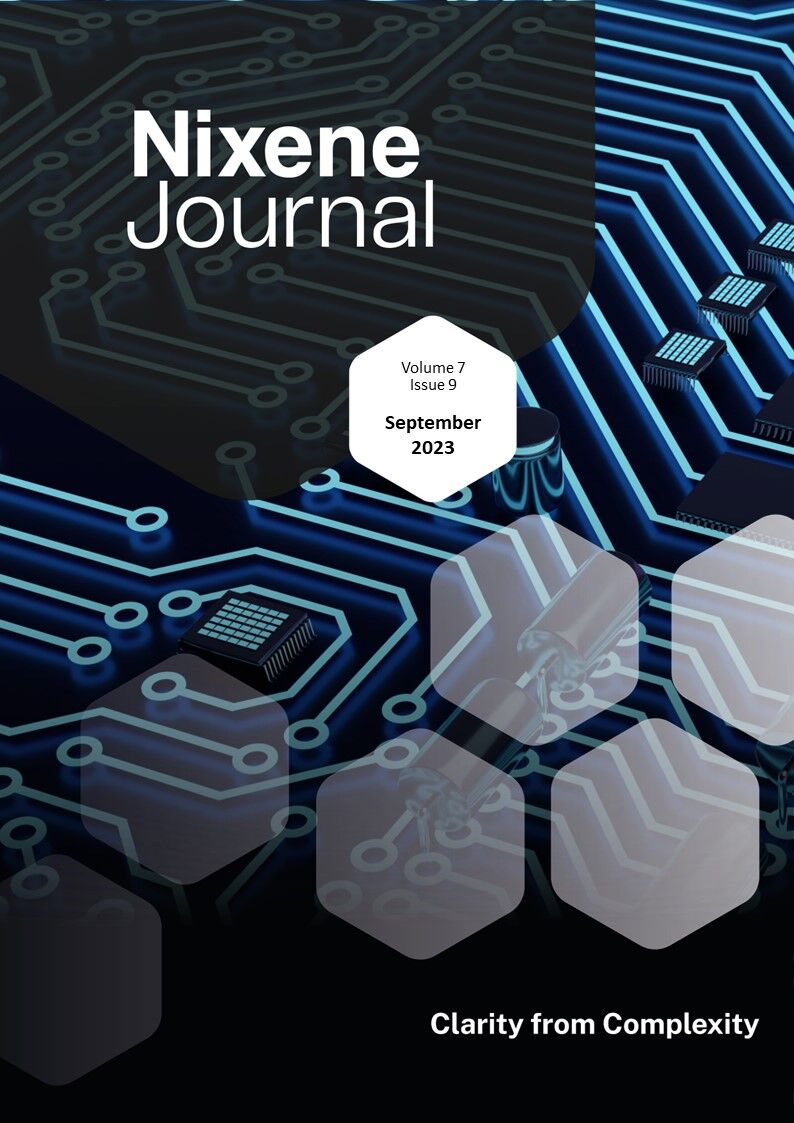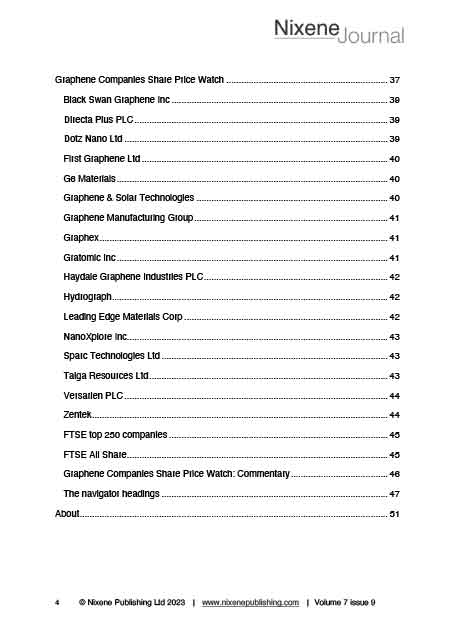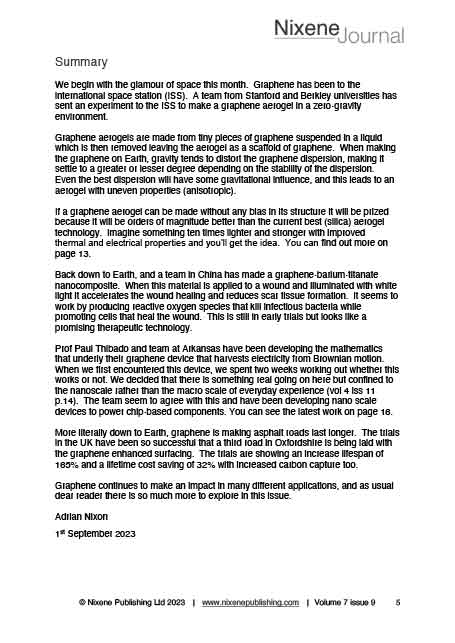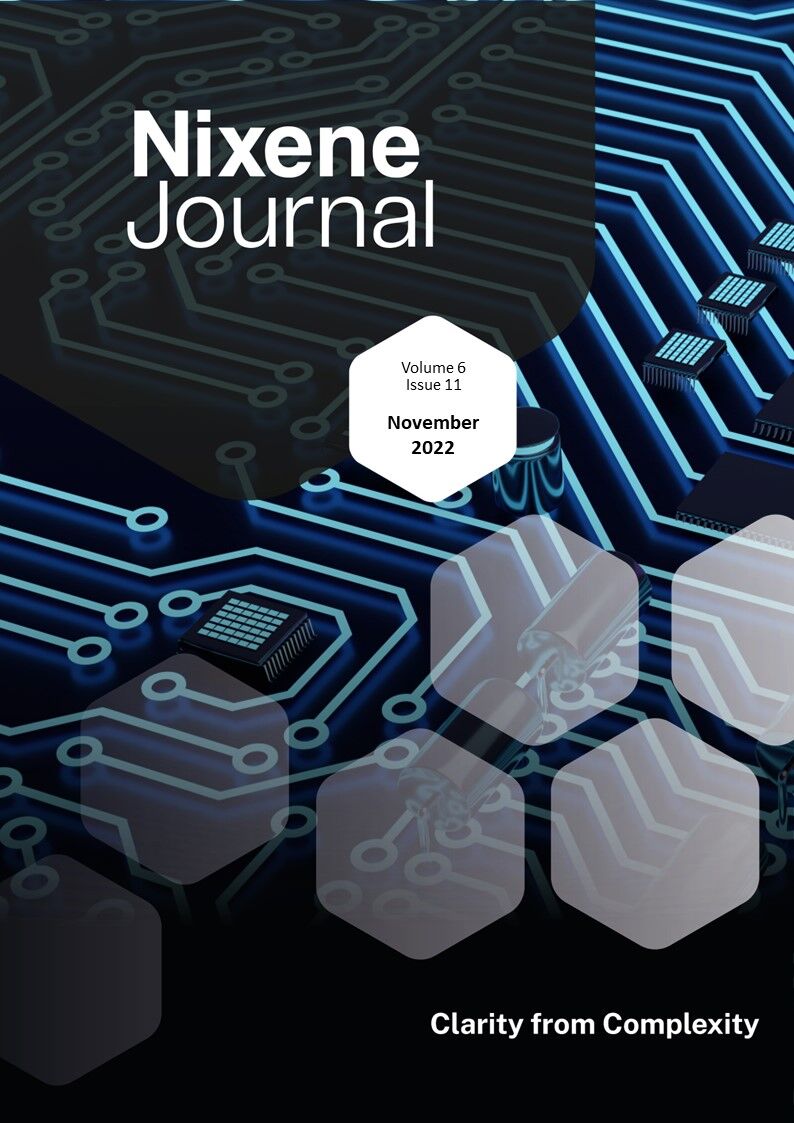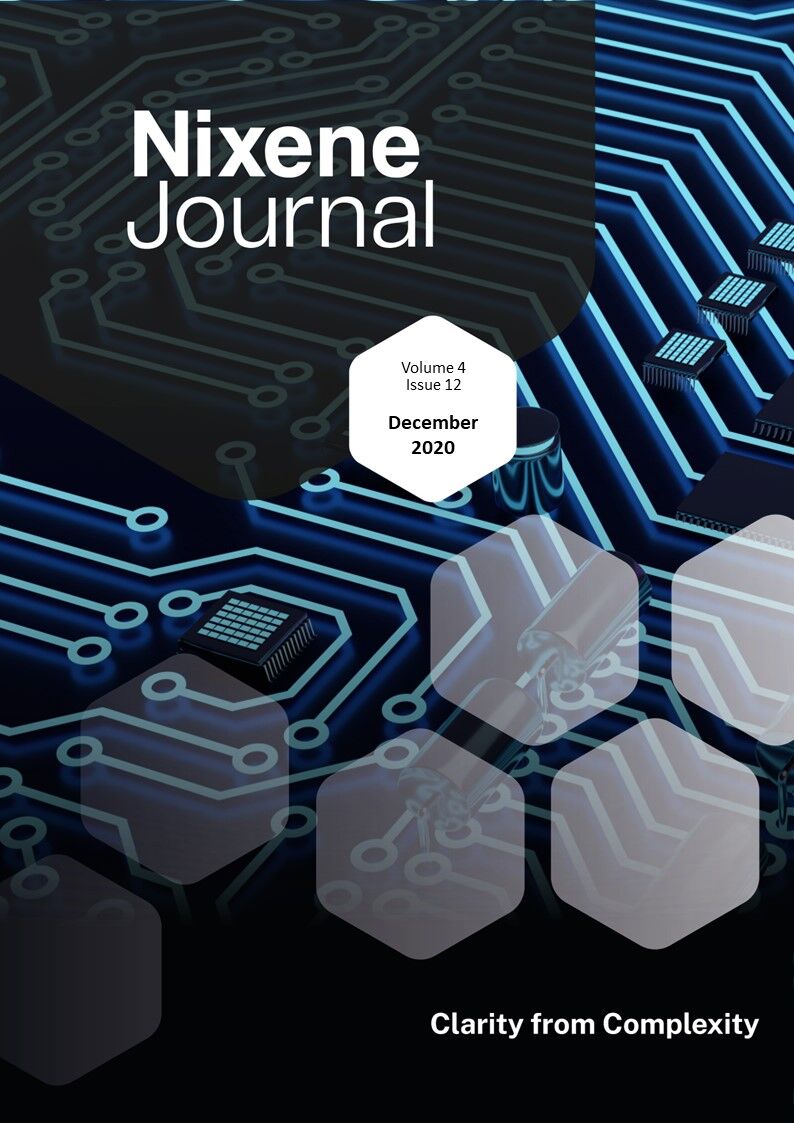Description
We begin with the glamour of space this month. Graphene has been to the international space station (ISS). A team from Stanford and Berkley universities has sent an experiment to the ISS to make a graphene aerogel in a zero-gravity environment.
Graphene aerogels are made from tiny pieces of graphene suspended in a liquid which is then removed leaving the aerogel as a scaffold of graphene. When making the graphene on Earth, gravity tends to distort the graphene dispersion, making it settle to a greater or lesser degree depending on the stability of the dispersion. Even the best dispersion will have some gravitational influence, and this leads to an aerogel with uneven properties (anisotropic).
If a graphene aerogel can be made without any bias in its structure it will be prized because it will be orders of magnitude better than the current best (silica) aerogel technology. Imagine something ten times lighter and stronger with improved thermal and electrical properties and you’ll get the idea. You can find out more on page 13.
Back down to Earth, and a team in China has made a graphene-barium-titanate nanocomposite. When this material is applied to a wound and illuminated with white light it accelerates the wound healing and reduces scar tissue formation. It seems to work by producing reactive oxygen species that kill infectious bacteria while promoting cells that heal the wound. This is still in early trials but looks like a promising therapeutic technology.
Prof Paul Thibado and team at Arkansas have been developing the mathematics that underly their graphene device that harvests electricity from Brownian motion. When we first encountered this device, we spent two weeks working out whether this works or not. We decided that there is something real going on here but confined to the nanoscale rather than the macro scale of everyday experience (vol 4 iss 11 p.14). The team seem to agree with this and have been developing nano scale devices to power chip-based components. You can see the latest work on page 16.
More literally down to Earth, graphene is making asphalt roads last longer. The trials in the UK have been so successful that a third road in Oxfordshire is being laid with the graphene enhanced surfacing. The trials are showing an increase lifespan of 165% and a lifetime cost saving of 32% with increased carbon capture too.
Graphene continues to make an impact in many different applications, and as usual dear reader there is so much more to explore in this issue.
Adrian Nixon
1st September 2023

